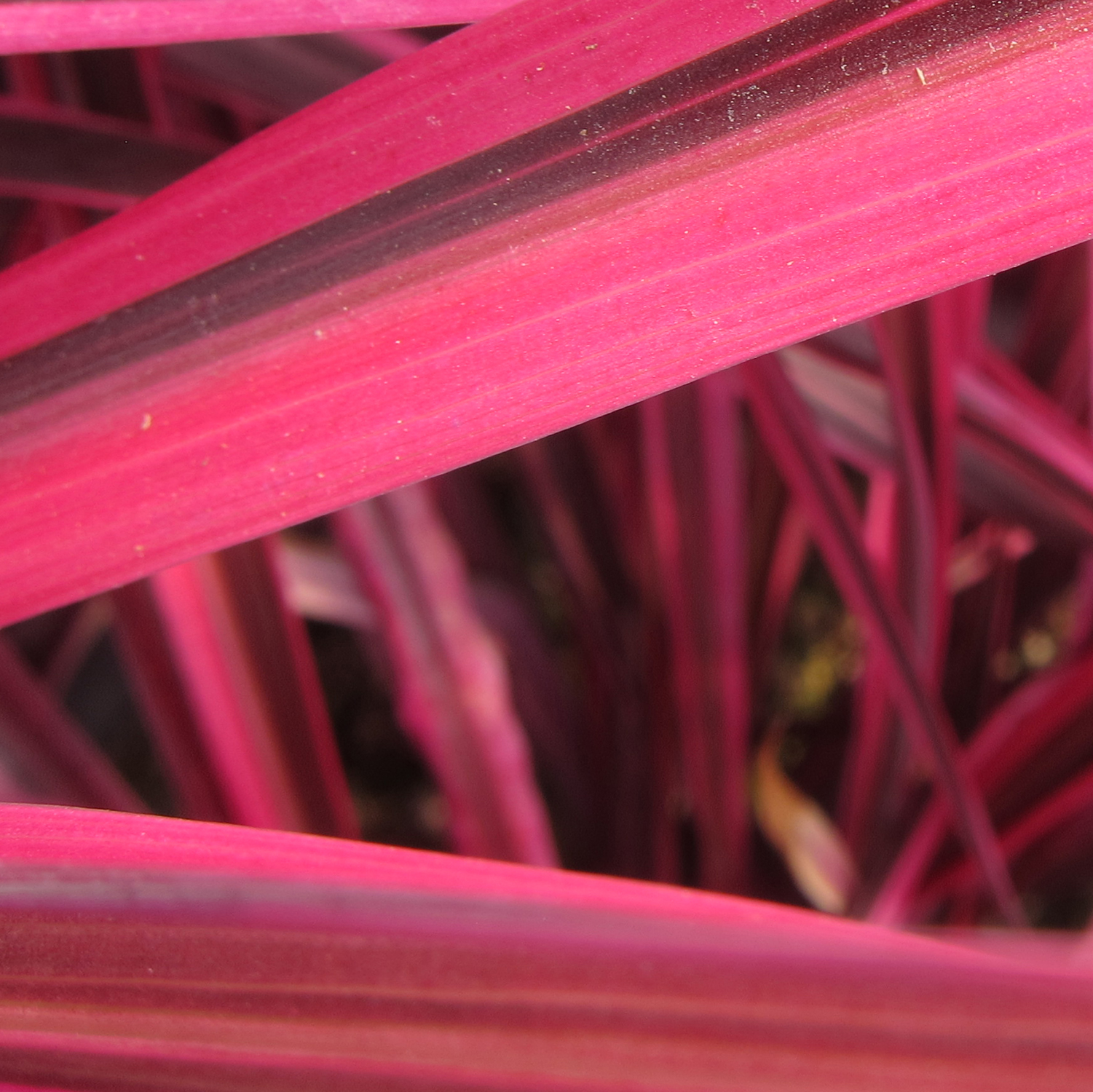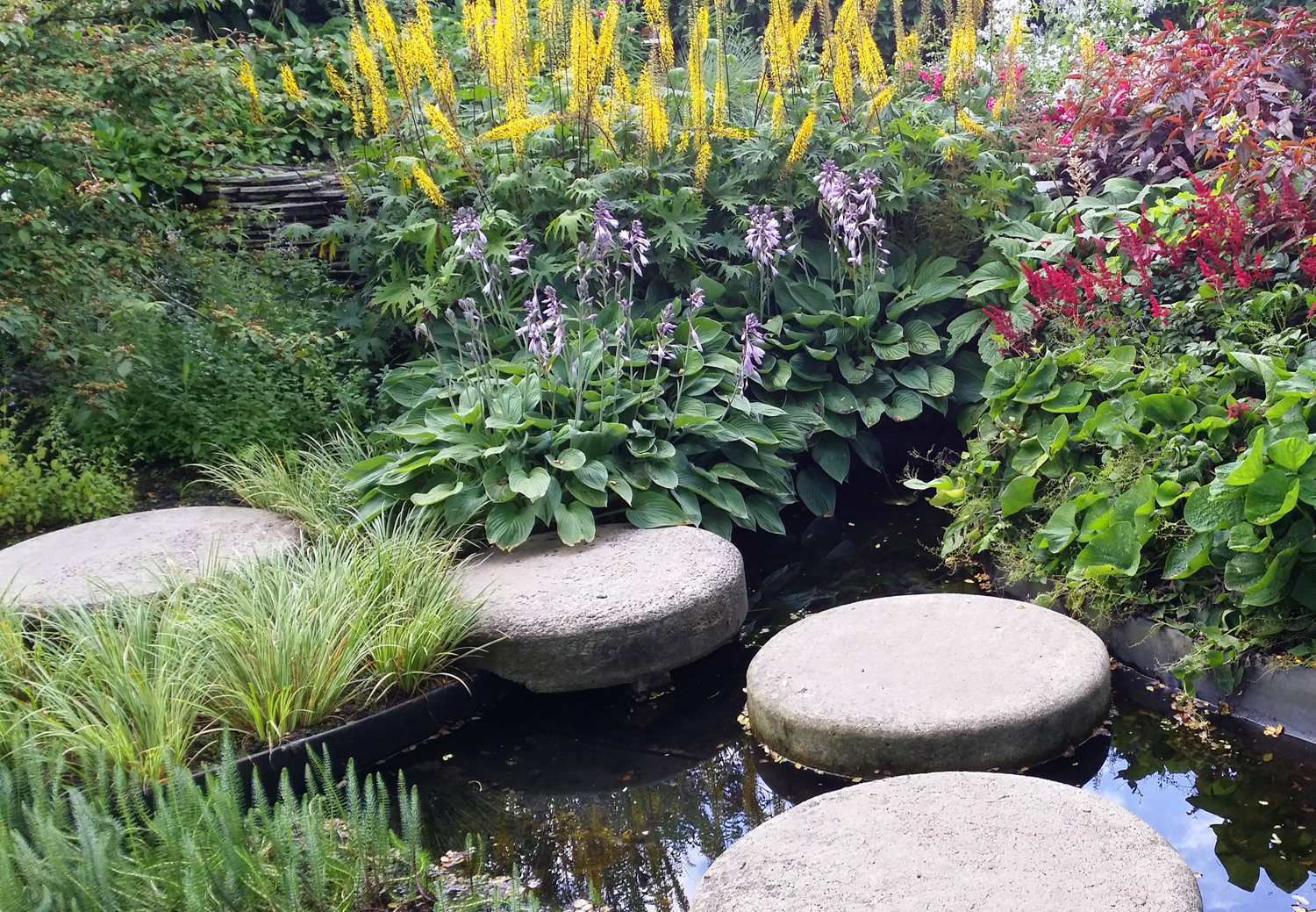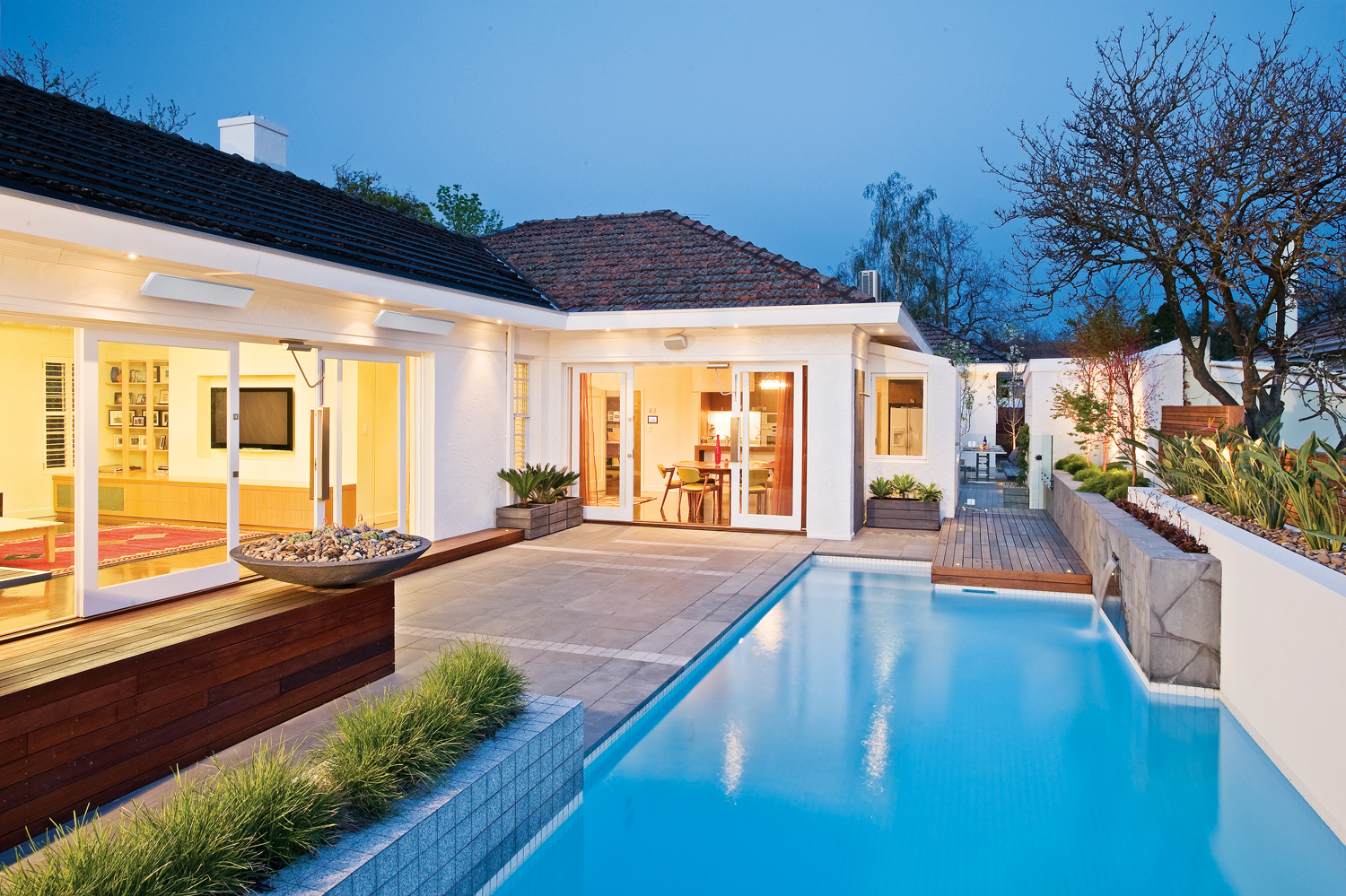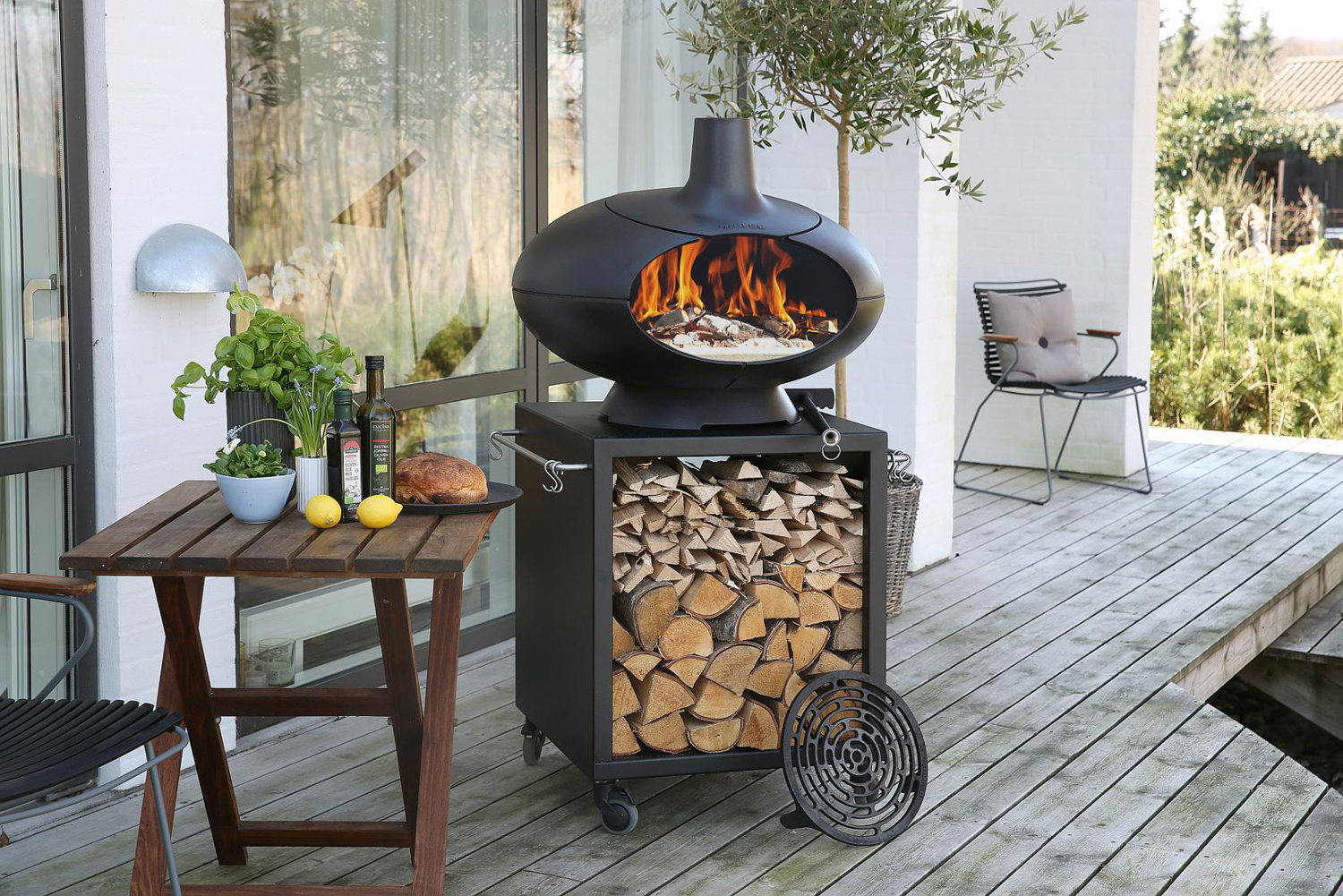A garden or backyard without a lawn might seem blasphemous — but can actually work wonders for your outdoor space. We show you how, presenting a variety of options

The practice run: This option is perfect if you’re the sort of person who can’t imagine life without a lawn, and is also cautious. The only reason you are reading this is because you understand that there’s no water to keep your grass looking and functioning like a lawn.
So you’re willing to do a little bit of a trial run. The idea here is to pick one small patch of turf to covert. Ideal candidates include the narrow strip running alongside the path to the front door; the wedge of green that sits between the front door and the sidewalk. In other words, any tricky little satellite section that’s a pain to mow.
Take a deep breath and spray the lawn with something guaranteed to kill it, but not linger to adversely affect any plants you might want to plant in its place later.
And while you’re waiting for your grass trial plot to wither up, start thinking about what you can do with the space. Your obvious options include: setting out a ground cover; or putting in plants in much the same way you’d plant out a garden bed. If you want to mimic the look of a green lawn with a ground cover, put down some weed mat, then tuck the tube stock in at tight intervals to help develop fast coverage.
Or if you’ve decided to put in garden plants, pick those that will thrive in low water situations and be sure to spread mulch thickly around after they’ve gone into the ground to help keep the weeds down and help maintain soil moisture.
If your driveway has a dying lawn lying alongside, cover it in something bullet-proof-but-lovely like these Flower Carpet Scarlet roses.

Making more garden: For many gardeners, the idea of making more garden space is a brilliant suggestion, simply because gardeners are often looking for more places – more room – to plant things.
Whether you are reducing the area of the lawn by converting it to garden beds, or taking the whole lawn out and creating a garden filled with only with garden beds, you start by getting rid of turf (see above).
Then it comes down to looking at the plant-able spaces you’ve created and deciding what would look great there.
Picking reliable, drought tolerant species is very important so be sure to do a little home work, but you’ll be pleasantly surprised at what sort of lush and unlikely looking options are available to you – like any of the new generation Flower Carpet roses which are called that because they’ve been bred to thrive with much less water. Look out for Amber, Scarlet and the knock out Pink Supreme.
Take a look at this brutal comparison. This lawn isn’t dead yet, but it still shows why replacing it with lovely plants (these are Flower Carpet Pink Supreme roses) makes sense.
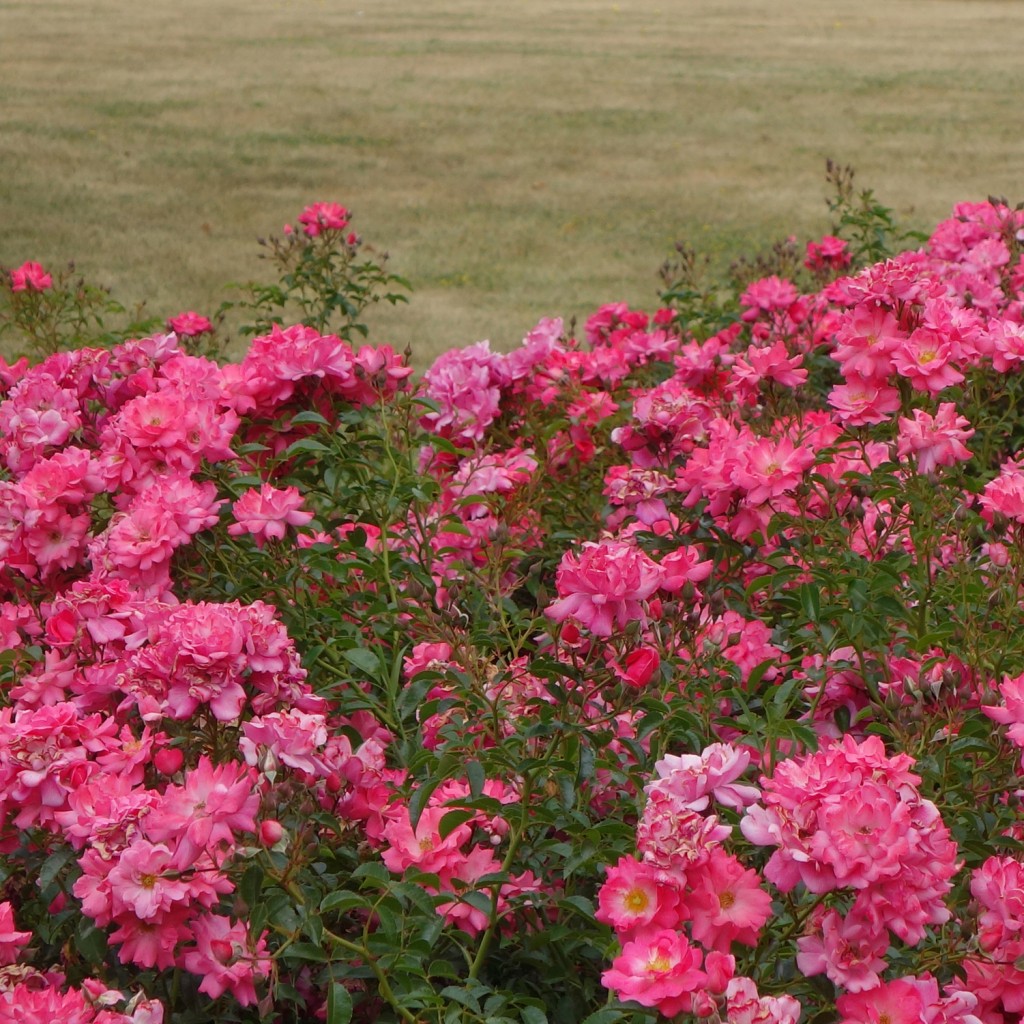
Go lunar but lovely: You may be the sort of gardener who can see that the lawn functions as a critical horizontal element in your garden’s design. In which case you’d be loath to mess with the balance.
Killing your lawn and replacing it with a permeable paved surface – think rock mulch, gravel or packable sand – is a great option. The surface is ‘soft’ on the eye and easy to maintain with a blower, rake and the occasional spray with weed killer.
Whatever rain does fall will still percolate through to give your existing garden beds and any trees a drink. Interestingly, removing the lawn and replacing it with this sort of surface (rather than plants) usually makes a garden look fantastic. If you do opt for gravel, adjust your garden edging where necessary then spread the load straight over the top of the old lawn.
The lovely and tough new generation Flower Carpet roses: Amber, Pink Supreme and Scarlet.
For more information












